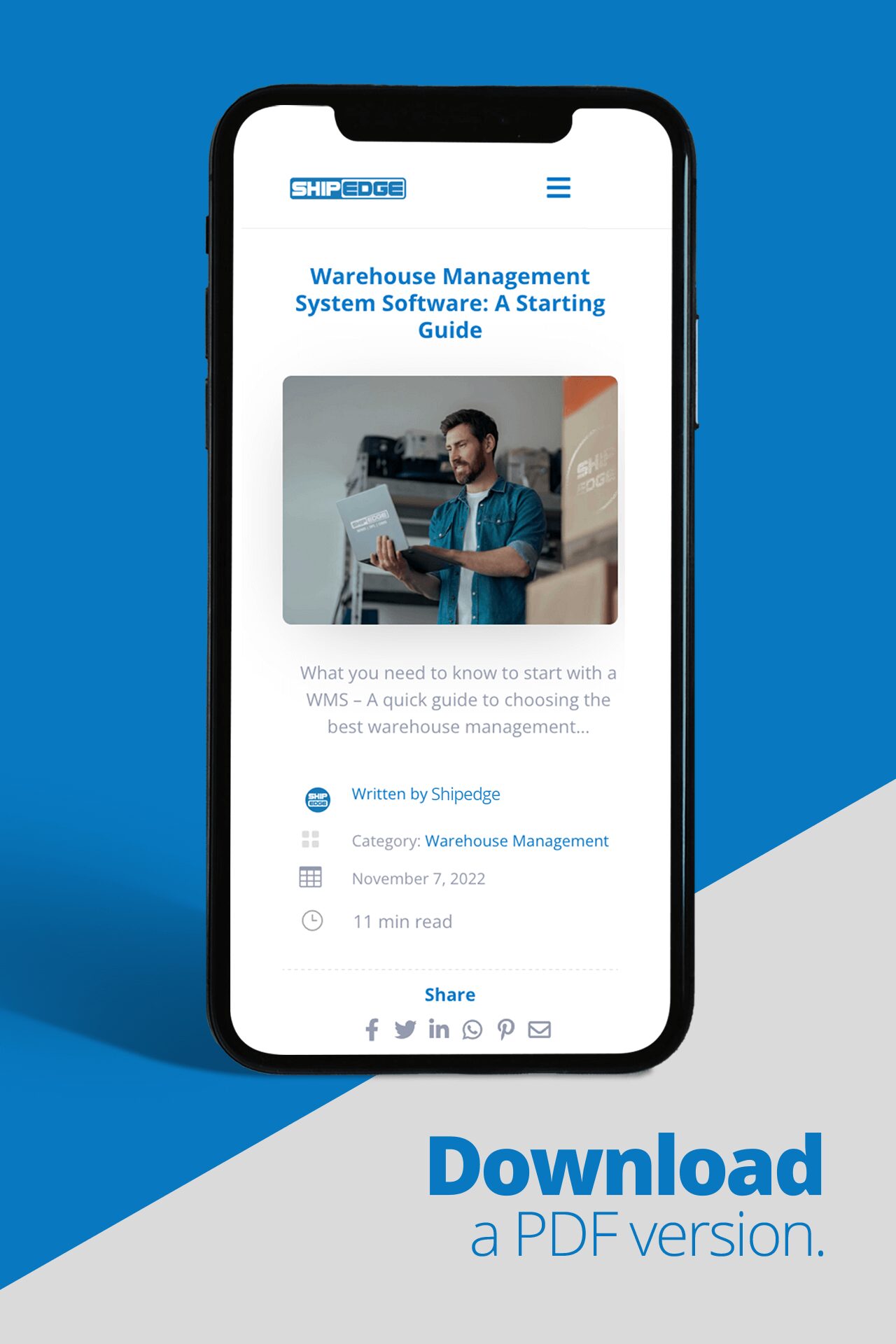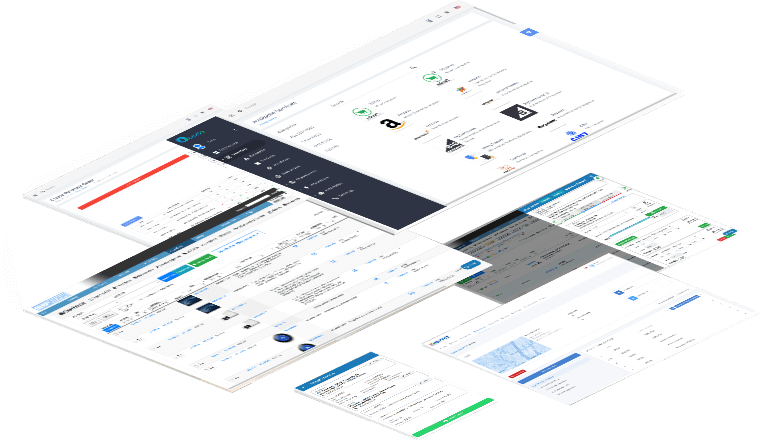Handling high-volume eCommerce periods can be one of the most strenuous challenges for any business. As consumer demand spikes, particularly during peak seasons like holidays or sales events, companies must rapidly scale operations to meet the surge without compromising on service quality or operational efficiency. Here’s a guide on managing those bustling times effectively.
Understanding High-Volume eCommerce Periods
High-volume periods are characterized by a steep increase in customer orders, which can strain the entire fulfillment process. These periods require meticulous planning, robust technology infrastructure, and seamless coordination across various departments.
Preparation is Key
Preparation for high-volume periods should be a year-round process, not just a seasonal adjustment. This includes analyzing previous sales data to forecast potential spikes, adjusting inventory levels, and ensuring the fulfillment infrastructure is up to par.
- Sales Data Analysis: Utilize historical sales data to identify trends and predict future demand peaks. Look at past high-volume periods and analyze which products were in high demand, what promotions worked, and where bottlenecks occurred.
- Forecasting: Based on this data, create accurate forecasts for inventory, staffing, and other resources. Effective forecasting helps ensure that you are well-stocked and adequately staffed to handle the surge without excess overhead.
- Infrastructure Assessment: Evaluate your current e-commerce infrastructure. Can your website handle increased traffic? Are your systems and servers robust enough to manage a higher load? Assessing and upgrading your technical infrastructure is vital to prevent crashes or slowdowns during peak times.
- Supplier Communication: Engage with your suppliers early. Inform them about the expected increase in demand so they can also prepare and ensure they can meet your increased needs.
- Contingency Planning: Despite the best plans, unforeseen challenges can arise. Have contingency plans in place for critical aspects like supply chain disruptions, inclement weather, website downtime, or sudden spikes in demand.
READ MORE: Preparing for Holiday Fulfillment in 2025
Inventory Management
A robust inventory management system is crucial. It should be capable of real-time tracking to prevent stockouts or overstocking, which can lead to lost sales or excess carrying costs. Regular audits and reconciliations should be part of the routine to maintain inventory accuracy.
- Real-time Inventory Tracking: Implement systems that provide real-time visibility into your inventory levels across all channels. This is crucial for making informed stocking decisions and avoiding stockouts or overstock situations.
- Thoroughly developed order management solutions will also provide connections to most selling channels to facilitate an omnichannel experience.
- Safety Stock Levels: Determine and maintain appropriate safety stock levels for best-selling items. Safety stock acts as a buffer against unexpected spikes in demand or supply chain delays.
- Diversified Suppliers: Diversify your supplier base to reduce the risk of being dependent on a single source for your critical inventory.

Streamlining Order Processing
During high-volume periods, every second counts. Streamlining the order processing workflow is essential to keep up with the pace. This means having an efficient system to quickly move orders from received to shipped status, with minimal manual intervention.
- Order Management System: Implement a robust Order Management System (OMS) that can streamline the entire order processing flow – from receiving orders across various channels to final dispatch.
- Batch Processing: Consider batch processing orders to speed up fulfillment. By grouping similar orders, you can minimize the time spent in picking and packaging.
- Automated Sorting Systems: Automated sorting systems can expedite the segregation of products for shipping, especially for large volumes of orders.
- Integration Across Channels: Ensure your OMS is integrated across all sales channels. This integration allows for a unified view of orders, helping in efficient order tracking and management.
- Employee Training: Train your staff on any new systems or processes introduced for the high-volume period. Well-trained employees are crucial in ensuring quick and error-free order processing.
Leveraging Technology for Scalability
The technology powering your eCommerce operations must be built with scalability in mind. This means systems that can handle increased processing loads, additional user activity, and higher transaction volumes without performance hiccups.
- Cloud-Based Solutions: Utilizing cloud-based platforms is a key strategy for scalable operations. These solutions offer the flexibility to scale up or down based on real-time demands, ensuring that you only pay for what you use. During peak times, cloud-based systems can effortlessly handle the increased data flow, customer traffic, and transaction volumes, ensuring consistent performance.
- Integration and Automation: Seamless integration between various e-commerce tools and systems is essential for scalability. Integrated systems work in unison to provide a cohesive operation, reducing manual data entry and the likelihood of errors. Automation in areas like order processing, inventory updates, and customer notifications can significantly reduce the workload on staff and speed up operations, allowing businesses to handle more orders efficiently.
READ MORE: Seven Vital Warehouse Software Features for eCommerce Warehouses
Shipedge: A Scalable Solution for High-Demand Periods
Shipedge’s platform is engineered to thrive during peak eCommerce periods. With high processing power and scalability, it supports businesses as they expand their operations to meet increased demands. Shipedge offers a flexible pricing structure designed for businesses dealing with high-volume eCommerce operations in mind.
High Processing Power
Shipedge’s systems are designed to efficiently manage large volumes of data, which is critical during peak times. This high processing capability ensures that the platform remains responsive, orders are processed quickly, and inventory levels are updated in real-time.
Built for Scalability
Understanding that eCommerce growth is not linear, Shipedge’s solutions are inherently scalable. They can be easily adjusted to handle increased order volumes without the need for significant changes to the existing infrastructure.
Seamless Connectivity
With eCommerce being a multi-platform arena, Shipedge offers seamless connectivity between various eCommerce platforms. Whether it’s integrating with new marketplaces or syncing with additional sales channels, the platform ensures that all systems communicate effectively, providing a unified view of operations.
Kitting and Bundling
Offering kits or bundles during Black Friday sales can drastically improve return on investment (ROI). Kitting two or more products together can help save costs such as shipping or picking and packing labor. It also encourages consumers to purchase more when a good deal is presented to them, especially during a time when they are primed to spend more. Make sure your warehouse management and order management systems support kitting for high inventory accuracy.

Warehouse Efficiency During Peak Times
Maintaining warehouse efficiency is crucial, especially during high-volume eCommerce periods. It’s essential to optimize every aspect of the warehouse to ensure quick and accurate order fulfillment.
- Layout Optimization: Ahead of high-volume eCommerce times, reassess your warehouse layout to ensure that frequently ordered items are easily accessible. This reduces the time pickers spend navigating the warehouse, a crucial factor during peak times.
- Technology Utilization: Implementing warehouse management systems (WMS) that offer features like real-time tracking and optimized picking routes can significantly enhance efficiency during high-volume eCommerce periods.
- Preventive Maintenance: Ensure all equipment is in top condition before these peak periods. Regular checks of conveyor belts, forklifts, and other machinery help prevent breakdowns that could lead to costly delays.
READ MORE: Optimize Your Warehouse Layout for Maximum Efficiency and Productivity
Order Fulfillment Strategies for High-Volume eCommerce
Developing robust order fulfillment strategies can significantly impact your ability to handle high volumes. This includes employing advanced picking strategies such as wave, batch, or zone picking to expedite the fulfillment process.
- Advance Planning: Coordinate with your sales and marketing teams to predict upcoming high-volume eCommerce sales. This allows you to align your fulfillment strategies with expected order spikes.
- Efficient Picking Methods: Implement advanced picking strategies like wave, batch, or zone picking, which are crucial for managing large volumes of orders typically seen during high-volume eCommerce periods.
- Use of Automation: Automation can be a game-changer in managing the surge of orders. Automated sorting systems, best shipping rate shopping, and picking routes can drastically reduce processing time from order receipt to dispatch.
Staffing and Training
An often overlooked aspect of preparing for high-demand periods is staffing. Having a well-trained team ready to handle the influx of orders is crucial. This means ensuring adequate staffing levels and providing comprehensive training on the systems and processes in place.
- Adequate Staffing: Ensure you have enough staff to handle the increased workload typical of high-volume eCommerce times. Hiring temporary staff can be a smart move to cover these periods.
- Comprehensive Training: Provide thorough training on your processes and systems to all employees, especially temporary ones, to ensure efficiency and accuracy during high-volume eCommerce times.
- Morale and Motivation: The stress of high-volume periods can be taxing. Keep morale high with incentives and clear communication, ensuring staff feel valued and supported.
Post-Peak Analysis
After the rush, it’s important to analyze performance. This involves reviewing what went well and identifying areas for improvement. Data collected during high-volume periods can provide invaluable insights that can be used to enhance future operations.
- Data Review: After high-volume eCommerce periods, it’s crucial to review performance data. This includes analyzing order processing time, shipping delays, inventory accuracy, and customer feedback.
- Identify Improvement Areas: Use this data to pinpoint what worked and what didn’t. Look for patterns in customer complaints and bottlenecks in the fulfillment process.
- Plan for Future Peaks: Use these insights to improve for future high-volume eCommerce periods. This might include adjustments in inventory management, fulfillment processes, staff training, or customer service tactics.
Conclusion
Handling high-volume eCommerce periods requires a well-thought-out strategy, robust technology, and an efficient operational workflow. With systems like Shipedge, businesses have the technological support needed to scale operations and manage increased demands effectively. By preparing in advance, optimizing processes, and leveraging the right technology, eCommerce businesses can turn potential chaos into a display of operational excellence.













0 Comments